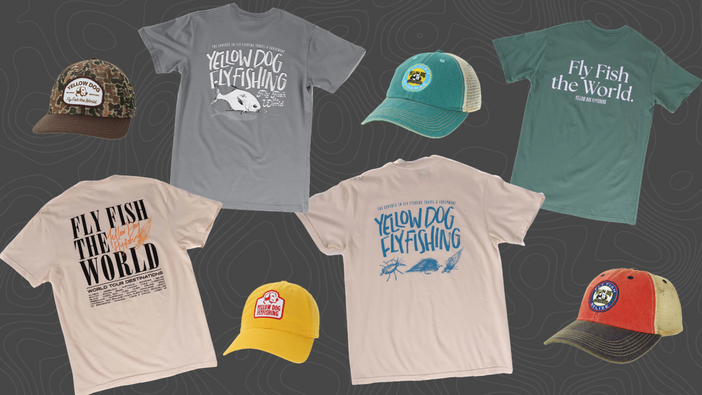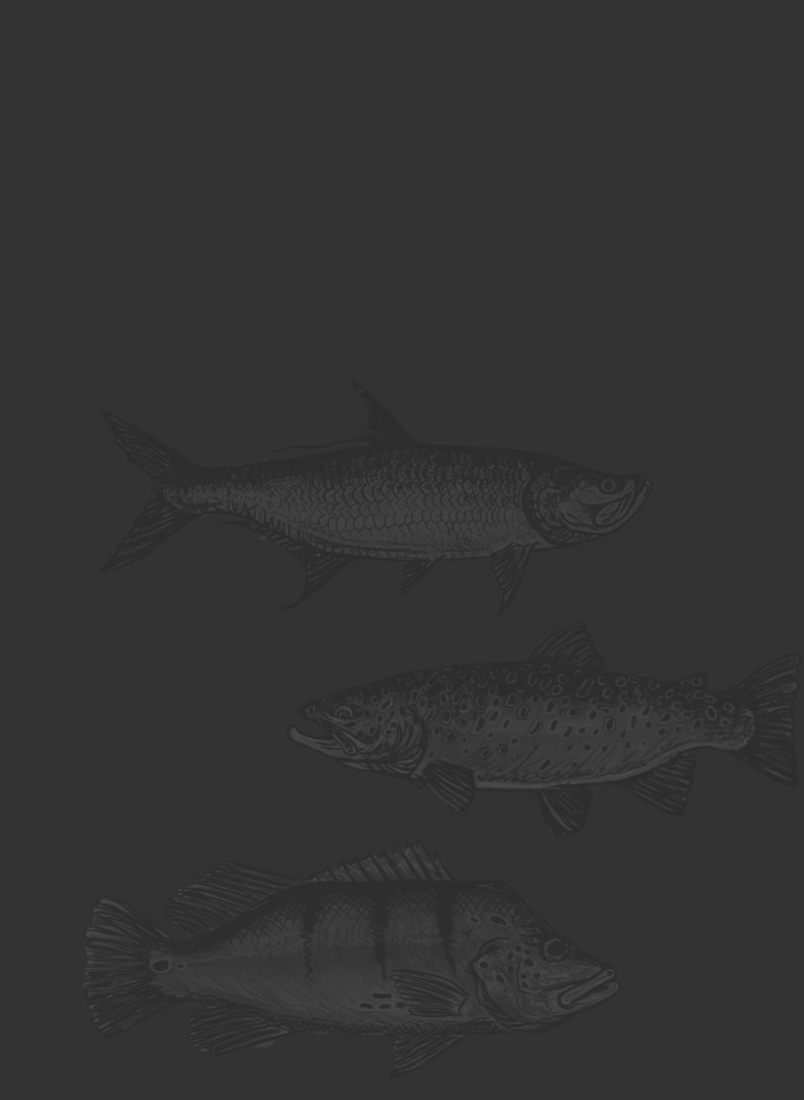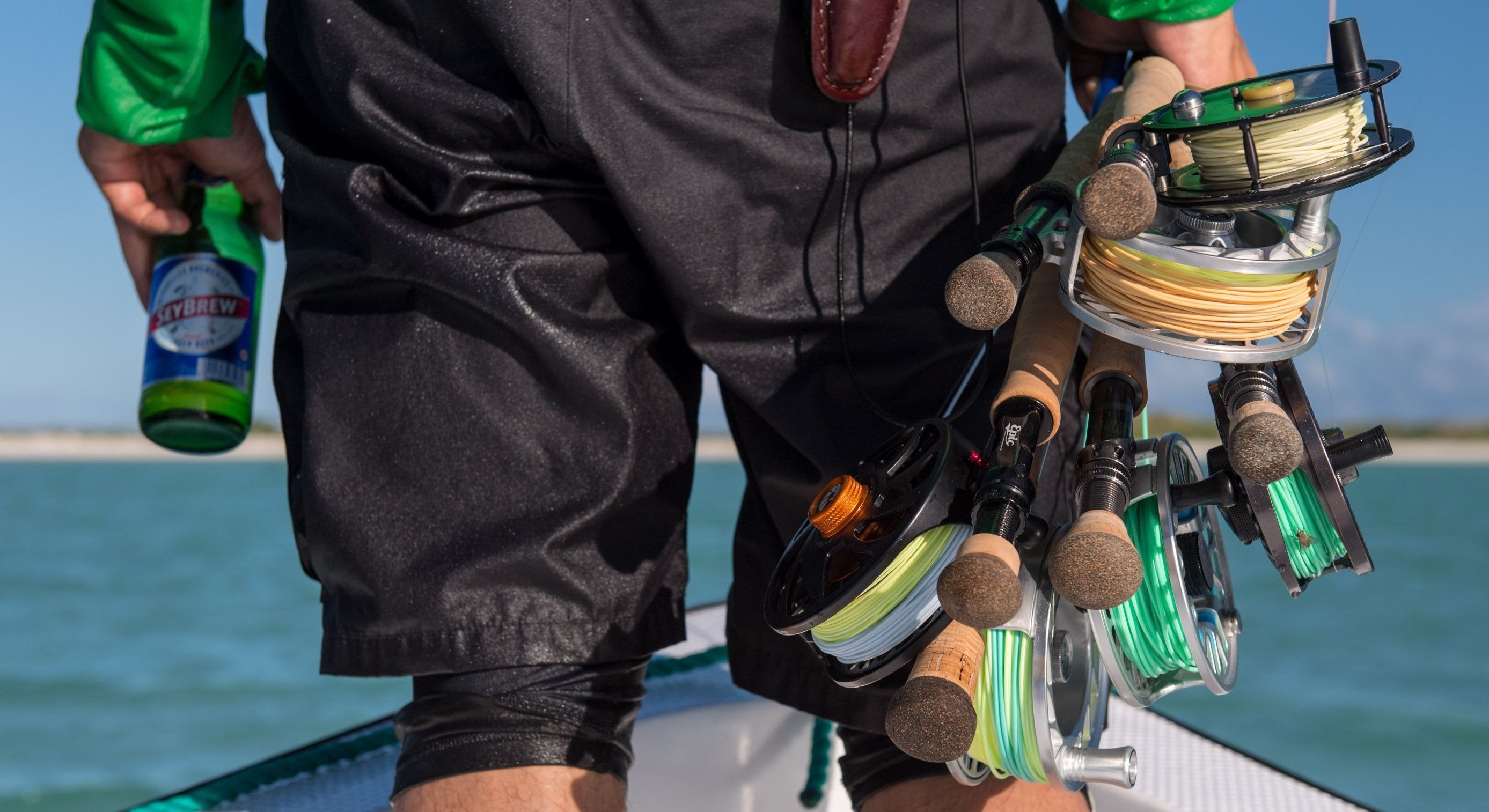Bozeman Information
Bozeman is a small college town in southwest Montana's Gallatin Valley. Several mountain ranges, including the Bridgers, Madison, Gallatin, and Tobacco Root ranges, provide for a breathtaking backdrop. With all the convenience of a major city in a small-town setting, Bozeman is the perfect place for any vacation - especially a fly fishing one!
Getting here is easy! We are serviced by several major airlines, including Delta, United, and Horizon. The airport, Gallatin Field (BZN), is located about 6 miles from our shop just west of town. The airport is generally small but efficient and various rental car agencies are located within the terminal.
Montana State University is located in Bozeman, home to about 10,000 undergraduate students and the Fighting Bobcats. MSU is nationally recognized for excellence in applied sciences and is a great place to attend college! Our historic downtown is home to a thriving business community, including art galleries, restaurants, coffee shops, and boutique retailers. Despite the influx of several big-box stores, our downtown continues to be the hub of our community activities, such as the Sweet Pea Festival, holiday parades, and various community celebrations throughout the year.
Types of Fisheries in Montana
The topography and geology of Southwest Montana have created a wide range of fisheries ranging from tiny alpine lakes to the vast western rivers like the Missouri and Yellowstone. In addition to nature's handiwork, man-made reservoirs of all sizes dot the landscape and are used for everything from irrigation storage to hydroelectric generation. The end result is that southwest Montana is full of choices for trout fishers of all skill levels. Essentially there are two primary types of fisheries, stillwater, and streams; within these two categories, there is a variety in size, origin, and productivity.
The region is best known for its moving water fisheries like rivers, streams, and spring creeks. The rivers and streams are generally considered "freestones" or "tailwaters," and spring creeks are unique to themselves. Freestones are rivers that are not regulated by the presence of a dam and will fluctuate seasonally in size and volume. Locally, these fisheries include the Gallatin, Yellowstone, and scores of smaller mountain streams. Tailwaters are fisheries or bodies of water that lie below a man-made dam which may be used for irrigation storage or hydroelectric power generation. These will generally have less diversity in their entomological profile, but the present insect life will be extremely prolific. Regional examples of tailwaters include portions of Madison, Beaverhead, Missouri, and Bighorn rivers, among others. Finally, smaller streams are generally spring-fed to some degree and then also accentuated by runoff and snowmelt in higher elevations. In rare cases, there are small to medium-sized creeks that are purely spring-fed, resulting in fisheries that are very rich in insect life while maintaining stable year-round temperatures and water volume. Paradise Valley, south of Livingston, is well known for its amazing spring creek fisheries on the Depuy's, Armstrong, and Nelson properties.

Local still-water fisheries can be found in all descriptions and sizes within an hours' drive of Bozeman. Except for a few mountain lakes, almost all of these fisheries are the results of the dam created impoundments. These fisheries are generally managed with hatchery-raised fished and are often regulated from a put-and-take perspective. Several private ponds are managed for trophy trout in the area's 5-10lb. class. Anglers looking for some variety in their trips may want to consider a day on one of the regional reservoirs such as Harrison, Ennis, or Hebgen Lake for a day "off the beaten path.” Smaller ponds and reservoirs are also available on private waters for an additional fee ranging from $75-$200 per angler. Stillwater trips sometimes are the best choice during the early stages of runoff in the spring and are typically fished from a drift boat.
General Fishing Information for Southwest Montana
Montana fly fishing is world renowned because of the overwhelming abundance of quality wild trout rivers, lakes, and streams. Couple this with ample public access, and there isn't any place in the lower 48 that comes close to the fly fishing opportunities of Southwest Montana. Whether you're here on one of Yellow Dog's Montana fly fishing trips or trout-bumming around the area on your own, our goal is to ensure that every angler that comes through our shop gets a taste of the world-class fly fishing that lies just outside our doors!
Southwest Montana is best known for its large rivers, such as the Yellowstone, Madison, and Gallatin, in addition to the many area spring creeks. Stillwater fisheries, including public and private reservoirs and hundreds of small mountain lakes, are also found throughout the area. Countless mountain streams provide seasonal opportunities for the adventurous angler as well. Yellowstone National Park is a couple of hours away and offers a great side trip while in the area. Finally, other regional waters include the Bighorn, Jefferson, Missouri, Big Hole, Beaverhead, Ruby, and more! There is no shortage of places to fly fish in Southwest Montana!

In addition to the sheer number of places to wet a line around Bozeman, our truly wild trout make these fisheries so unique. Montana does not stock our state's rivers with hatchery fish - all of our rivers are home to wild, self-sustaining populations of Rainbows, Browns, and Cutthroat Trout. As a result of this management practice, anglers can expect to catch fish in a wide range of sizes. Unlike other western states, Montana's trout are truly wild (we haven't actively stocked rivers since the early 1970s).
Yellowstone National Park
Yellowstone National Park is a Mecca of fly-fishing in the Rocky Mountains. The waters that leave the park form the nation's most famous trout rivers. There are 2,221,000 acres full of trout streams and lakes. Some are accessible by car, and some require a rigorous hike into distant backcountry. There is something for every angler.
The Madison and Firehole Rivers are very popular with fly-fishers. The best fishing occurs in the spring and fall. In the spring, there are tremendous hatches of caddis flies and Pale Morning Dun mayflies. As fall arrives, many anglers fish large streamers on the Madison River hoping to catch large brown trout during their spawning migration. During mid-summer, thermal activity and warm days force the trout to find cool streams more suited to them.
The Gibbon River, which forms the Madison River when it meets Firehole River, fishes well throughout the summer. It is a beautiful meadow stream that hides some large trout but requires a very cautious approach by the angler. In the Elk Park Meadow, the angler must approach the river on hands and knees to avoid spooking the fish, but the rewards are well worth it.

The Bechler River in the remote south end of the park is the place to hike for great fishing and some solitude. It fishes very well throughout the summer with beetle and ant patterns. During early summer, the mosquitoes and deer flies can be maddening. The Yellowstone River is very popular and is often crowded with anglers. The fishing is gone from opening day on July 15 throughout the summer. Yellowstone Cutthroat Trout are common and always feeding on the lake all the way to Sulfur Cauldron. These slick gin-clear waters are a dry fly fishing paradise. The cutthroat populations have dwindled over the last few years due to whirling disease and the introduction of non-native Lake Trout in Yellowstone Lake. Despite this, you would be hard-pressed to find a more beautiful spot to fly fish. There are two remote canyon sections of the river-The The Black Canyon and The Grand Canyon. It is an easy hike in but a challenging hike out. Many uneducated trout with eager feeding habits make these an excellent choice for the hiking enthusiast. Solitude can easily be found in these deep canyons.
The Lamar River and Slough Creek are tributaries to the Yellowstone River. They fish great throughout the summer but are often dirty with snowmelt until mid-July. The fish in these streams can often be very picky when a hatch is in progress. These fish, although often stubborn, will sometimes greedily eat large terrestrial patterns such as oversized beetles, ants, and crickets.

There are more streams and lakes that deserve mention. Buy a topographic map or pick up a regulations booklet with us, which includes a general road map of the park. Ensure you get a fishing license for the park and use precautions when in bear country. You could spend your whole life in Yellowstone National Park and never fish in the same place twice.
General Stream Access Law
Montana has a great stream access law that allows recreationists to access most streams in the state. Where streams or rivers flow through private land, you can fish in the stream as long as you enter through a legal access point and stay within the ordinary high-water mark. Private spring creeks are an exception to the rule where you must pay to fish. Public access sites such as Forest Service, BLM, or State Lands are the most accessible places to legally access streams. Also, there are restrictions on where motorized craft can be used, so check with FWP to see where they can be used. Private spring creeks are an exception to the rule; these are pay-to-fish streams. Abuse of this law could see changes to it, so it is good to be courteous to the landowners. Please do not litter, and keep dogs from harassing livestock or entering private land.
Montana passed a new bill to clear up confusion about accessing bridges. “The public can access surface waters by public bridge or county road right-of-way. The Department of Fish, Wildlife and Parks, in cooperation with the affected landowner and county, is responsible for providing public passage around or through a fence preventing such access. A typical access feature would be a stile, gate, roller, walkover, or wooden rail fence.”
"Ordinary high-water mark" means the line that water impresses on land by covering it for sufficient periods to cause physical characteristics that distinguish the area below the line from the area above it. Characteristics of the area below the line include, when appropriate, but are not limited to deprivation of the soil of substantially all terrestrial vegetation and destruction of its agricultural vegetative value. A flood plain adjacent to surface waters is not considered to lie within the surface waters' high-water marks.
General Fishing Techniques
The diversity and amount of trout-filled waters in southwest Montanan allows us to provide anglers with these types of choices most of the year. You will find a brief description of the techniques we typically use below to help better understand how we fish and what to expect when you're on the river.
Dries
Everyone loves dry-fly fishing; to many, this represents our sport's “purest” form. Essentially, dry-fly fishing involves using a fly that closely imitates an adult or emerging aquatic insect (Mayflies, Caddisflies, Stoneflies, etc.) or any one of a variety of terrestrial insects. “Match the Hatch” fishing is typically exemplified best by the image of casting a dry fly to a steadily rising individual or a pod of trout that are feeding on or near the surface of a stream or lake. This type of fishing is typically best between March and October, with reliable opportunities to be found year-round on the local spring creeks. Fishing with attractor dries like Royal Wulffs, Humpies, Trudes, etc. is typically available throughout the year as well but is best between June and September. Attractor dries are typically fished “blind” over water where trout are most likely to be holding and feeding. Finally, late summer and early fall is the time of year when patterns representing Grasshoppers, Ants, & Beetles will bring fish to the surface across the region. Although catching fish on a dry fly is a fantastic experience, it is often necessary to fish with nymphs or streamers throughout the day to find feeding trout.

Nymphs
Nymph fishing typically involves using flies that closely imitate the immature stages of aquatic insects. Most aquatic insects spend 99% of their life underwater in the nymph or larval stage of their lifecycle. Therefore, trout spend most of their time feeding on these stages of insects and it is often necessary to use nymphs to get to feeding trout. Nymphing is almost always effective to some degree and will most certainly produce a few fish on even the toughest of days. Fly-fishing with nymphs is productive year-round and is the preferred choice when the rivers are slightly off-colored or have little surface activity.
Streamers
Chuck and duck streamer fishing is usually limited to anglers with intermediate and advanced fly fishing skills. Streamers imitate larger forms of trout prey, such as crayfish or small fish from various species. For the angler searching for a large fish, fishing streamers are often the most effective means for finding the true brutes of our local rivers. Heavier rods (7-8wts) are preferred, and sink-tip lines are used occasionally to help get flies down in the deepest of runs on the Yellowstone River. Streamer fishing tends to be the most effective in the spring and fall, but we will use streamers with regularity throughout the year.
Winter Fishing
Winter can offer good fly fishing without the crowds or selective trout of summer. Fishing can be really good when the weather warms up enough to melt off the ice and slush. During very cold weather fishing can be brutal and dangerous. Shelf ice is sheets of ice that extend out into the river can break off when someone stands on it. Anchor ice is the ice that forms on the bottom of the river when it is very cold. Either type of ice can cause a person to go swimming in icy waters which can result in a very bad situation.
Even when most places are too icy, there are always a few good options. Ice is not a big of a problem on stretches of the river just below dams like Hebgen Lake on the Upper Madison and Holter Dam on Missouri. Private Spring Creeks have warm water throughout the year, and in winter the cost is less than half of summer rates. The warm water of the spring creeks makes for baetis and midges hatches throughout winter, and dry fly fishing can be good even on the coldest days. Spring creek fish are normally known for being very picky and spooky, but during winter you will often find them to be much easier to catch.
Warmer days during winter will warm up the water on area rivers, and this can really get the fish feeding. Midge hatches can occur on any of the rivers, and you can find pods of trout rising to these small insects in slow-moving backwaters. Nymphing is the most reliable method to catch fish during winter, and often times the trout will be holding in slower, deeper runs. Really cold water slows down a trout’s metabolism, so they don’t want to be fighting a strong current to catch something to eat. They will usually not swim very far to pick up a small bite to eat because this will consume more energy than it’s worth. This is why it is important to get your nymph rig down near the bottom of a hole where the trout are holding. Adjusting weight and indicator length can make a big difference when fishing during winter. Trout are often not very picky about fly patterns or tippet size in winter due to the lack of fishing pressure. Basic small nymphs like Zebra midges, Serendipities and Pheasant Tails trailed behind a larger nymph like a Pat’s Rubber leg or San Juan Worm often will get the job done.
Winter can offer productive fishing and is often peaceful without the crowds experienced during summer. The wind is another factor that can ruin a day, so make sure to check the weather forecast before you go. Getting out on a nice winter day can be a great cure for that cabin fever too! Have fun and be safe out there.
+ Click here to learn more about Montana Fishing Seasons
Recommended Gear
Here is a list of recommended gear to help you get the most out of your trip to Bozeman. This is by no means and complete list but covers most of the bases. Just keep in mind that the Bozeman area resides in a mountainous environment and even a hot day can start out a little chilly. If you have any questions, please don't hesitate to contact us.
Fly Rod:
8’6” or 9’ medium to fast action 5 or 6 wt rod
Fly Reel:
Adjustable drag reel with 75-100 yds of backing
Fly Line:
Weight Forward Floating Line matched to your rod
Waders:
Breathable Stockingfoot or Bootfoot
Wading Boots:
Felt or Rubber soles (No Studs); Sandals of water shoes for warm weather
Flies:
General trout assortment
Polarized Glasses:
Amber, Copper, or Brown lenses; Sunglass retainers and cleaning cloth
Hat:
Ideally a brimmed hat for sun protection
Lightweight Longsleeve shirts:
Nylon, cotton, or a blend of the two fabrics
Lightweight pants:
Quick-drying nylon is best, zip-offs are great for warm days
Fleece:
Medium to lightweight tops and bottoms for layering
Raingear:
Breathable/packable coat
Jacket:
Warm outerwear jacket with full sleeves
Gloves:
Sun gloves in the summer, fingerless fleece gloves in cold weather
Skin Protection:
Sunscreen, Lip Balm, Insect Repellent
Camera:
Point-and-shoots work well, waterproof cameras are always safe
Basic Medicines:
(ibuprofen, Neosporin, Benadryl, antacid)
Others:
Backpack or small duffle for boat
Neoprene wading socks for warm weather wading
Snacks for the boat
Get Prepared For Your Next Montana Trip
+ Check Out Our Montana Fly Fishing Lodges
+ Shop Our U.S. Rockies Trout Equipment List





























